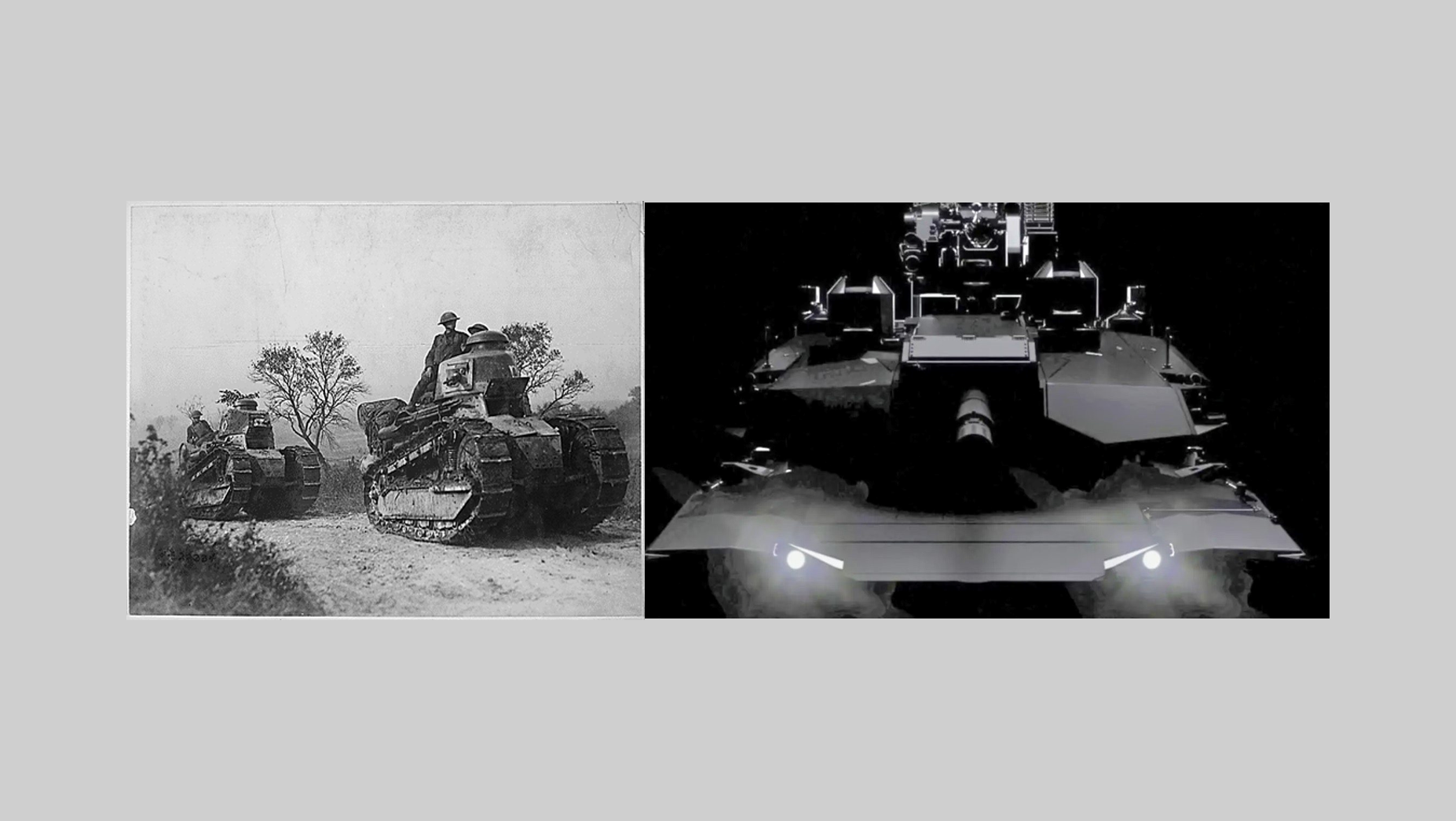From WWI to AbramsX: The Enduring Power of the Main Battle Tank
Published: 17 June 2025
By James Jay Carafano
via the National Security Journal website

Tanks WWI and AbramsX
American troops going to the battle line in the Forest of Argonne, Sept. 26, 1918 (left); the AbramsX concept for future U.S. Army main battle tank (right).
The U.S. Army’s New AbramsX Tank Could ‘Roll Over’ Anything
Key Points and Summary: The main battle tank is not obsolete; its relevance is determined by battlefield context, not by the advent of new technologies like drones.
-Historically, predictions of the tank’s demise, such as after the 1973 Yom Kippur War, have proven false.
-While drones pose a new threat, they also enhance armor’s survivability by providing better reconnaissance. As long as ground forces need to take and hold territory, armored platforms will be essential.
-The future, exemplified by concepts like the AbramsX, lies in integrating tanks into a multi-domain network with AI, robotics, and advanced active protection, ensuring their continued dominance in land combat.
Innovation in the consumer space is as much a matter of choice, taste, and government and corporate influence as it is a byproduct of technological change. When new products and standards are widely adopted, the market shifts to producing what people want—out goes VHS, in comes DVDs, out goes CDs, in comes streaming, and so it goes. Weapons development does not follow the same pattern.
Weapons systems are about lethality—as long as they are useful and effective at killing enemies, they never truly become obsolete. The US Army, for instance, disbanded horseback cavalry in the 1940s, only to deploy special forces on horseback to fight in Afghanistan. From mines to bayonets and artillery, weapons borne by doughboys in the trenches in World War I are carried and employed by Ukrainian soldiers today defending their country—from trenches. Weapons, unlike fashion, don’t go out of style on a whim.
The continued utility of killing systems is determined more by context than consumer choice. Remember the battleship supposedly made obsolete by aircraft carriers in World War II? The US did not decommission its last battleship, the USS Missouri (BB-63), until 1992. The ship was taken out of service not because it was no longer a combat-effective weapons system but primarily because the Navy determined the cost and manpower required to run the ship were prohibitive.
All About Armor
When Israel’s enemies widely deployed cheap and effective anti-armor systems in the 1973 Yom Kippur War, many predicted the end of the age of armor (ignoring that armor units undertook some of the strategically decisive operations in the conflict). Yet, almost thirty years later, during Operation Desert Storm, the American Abrams tank led the way in a lightning campaign that swept through the Iraqi armed forces. Even today, tanks are widely deployed in the Russia-Ukraine war.
Historically, why armor has succeeded or failed in combat today appears little different from when it was first introduced on the battlefield during World War I. Success or failure is more a matter of tactics than mechanics. When tanks are poorly employed, they perform poorly. When tank crews are not well trained, well supplied, and well supported, tanks become metal coffins, not combat systems.
On the battlefield, rather than technology driving weapons systems into obsolescence, often the opposite happens. Technological advances make weapons more effective. Cost-effective suicide drones, for example, have proven competent tank killers. Drones can also act as scouts, helping identify threats that make tanks more survivable. Indeed, armor is one of the greatest beneficiaries of multidimensional warfare, which brings capabilities from the air, space, cyberspace, and the electromagnetic spectrum to the warfighter on the ground.
As long as weapons systems with armored protection are needed to go into harm’s way, tanks have a role in battle. Indeed, with the increasing capacity to deliver battlefield enablers into the combat space, armor will likely have a more significant role in land combat.
→ Read the entire article on the National Security Journal website here:
External Web Site Notice: This page contains information directly presented from an external source. The terms and conditions of this page may not be the same as those of this website. Click here to read the full disclaimer notice for external web sites. Thank you.



